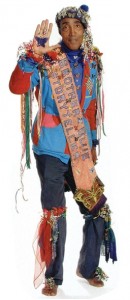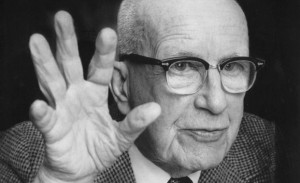 Maybe he was a phenomena that came and went with a magical time and place – the brick-walled village center of Cambridge, Massachusetts in the 1970s. Maybe you heard of him, maybe you saw him, maybe you knew him. He was an innovator of the oratory arts, a pioneer in the technology of storytelling. He went by the name Brother Blue. I came across a youtube video of Brother Blue the other day and it warmed my heart. He was a black man of American descent, a griot of American culture.
Maybe he was a phenomena that came and went with a magical time and place – the brick-walled village center of Cambridge, Massachusetts in the 1970s. Maybe you heard of him, maybe you saw him, maybe you knew him. He was an innovator of the oratory arts, a pioneer in the technology of storytelling. He went by the name Brother Blue. I came across a youtube video of Brother Blue the other day and it warmed my heart. He was a black man of American descent, a griot of American culture.
I had seen him animate the ethos in Harvard Square on numerous occasions in the mid 1970s, laughingly spraying out bright colors with his words the way people joyfully throw dry colored powder at each other in India in their spring festival.
About a year after my first experience of being mesmerized by him, I got a phone call from his wife. She was both his “manager” and a longstanding Harvard scholar. Quiet and sweet, I later learned she looked the part of the latter. While he filled any space with his presence, she kept him grounded with the strong presence of her quietude. She called to ask if I would be open to letting Brother Blue attend an event for free that I was producing. It was Buckminster Fuller doing a weekend at the Harvard Science Center (that was the most beautiful venue in Boston at the time). I heartfully agreed and then got a call from Brother Blue to ask if he could have an aisle seat. Again, I was more than pleased to accommodate.

A couple hours into the event, an 80 year old Bucky stood front and center, amidst the plants and art that filled the stage, lecturing in his style that wove poetry with mathematics, with stories of the past and visions of the future, when lo and behold, Brother Blue rose up in the audience and, standing right at his seat, broke into a rap on Bucky being a butterfly. As if choreographed, Bucky took a step forward and gave a poetic return to Brother Blue’s call, like two old bent-over cotton pickers a hundred rows away from each other in a cotton field. Blue continued his soliloquy of Beauty, moving closer as he spoke/sang, and Bucky mirrored Blue’s movements, echoing with humility his appreciation of this tall, thin, black, face-painted, embroidery-laden one-man minstrel, so sincere and radiant. I watched them, and I watched the audience to see how they were experiencing this unscheduled unfoldment. They looked as if what Blue carried with him was contagious and they were all delightfully infected, their eyes wide and faces aglow. Not much oxygen was being consumed in that room as Bucky and Blue moved so gracefully towards each other, joined in eloquent songspeak.
And like the inevitable climax in a book or film, they finally stood face to face, and hugged. A long and heartful hug that communicated fully what Blue loved to say, “From the middle of the middle of me to the middle of the middle of you!” The audience rose to their feet and applauded. Some cried. It was so moving.
Those were the early days of what is now a “mindfulness movement”. While I was doing research in consciousness at Harvard and into altered states of consciousness at Interface Foundation, teaching Biofeedback at Boston College and going to vipasanna retreats at the Barre Insight Meditation Society, Brother Blue was out on the street, bringing passers-by in the pedestrian world of Cambridge to his level of presence, enlightening them as they walked to their classes or corporate cubicles. While Bucky was awakening the world to a new consciousness that led to thinking globally and acting locally, Brother Blue was awakening the people in his world to their sense of wonder. One was encouraging the world to come together to keep the world afloat, the other was “building a better world, one story at a time”. Both had great presence, and both were great teachers for me. They embodied, and taught, how to put quality attention where it needs to go in the moment, how to treat what matters as if it matters, and how to do it mindfully. Together, they helped give a humanistic shape to the mindfulness movement.
For more Brother Blue related information and inspiration see these links:
“I bring Homer to the streets. I bring Sophocles. To tell stories, you should know Chaucer. You should know Shakespeare. You should know Keats. You have to be constantly reading. You read, you think, you create. You have to know the new moves: You must be able to rap and be able to sing the blues!”
Brother Blue
Copyright © 2014 Jim Lehrman